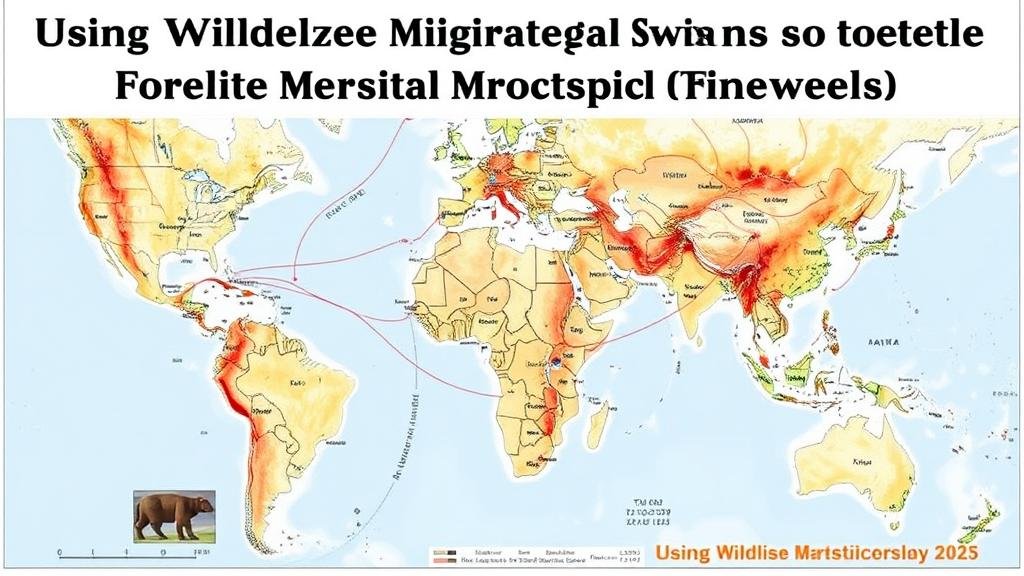Using Wildlife Migration Maps to Predict Fossilized Prehistoric Pathways
Using Wildlife Migration Maps to Predict Fossilized Prehistoric Pathways
In the study of paleontology, understanding the migratory patterns of prehistoric wildlife plays a crucial role in reconstructing ancient ecosystems and geographical landscapes. Recent advancements in wildlife migration mapping offer a novel approach to predict the pathways taken by prehistoric animals, facilitating a deeper understanding of their behaviors, habitats, and eventual fossilization processes. This article explores the significance of wildlife migration maps in paleontological research, the methodologies involved, and the implications for future studies.
Historical Context of Wildlife Migration Studies
The concept of migration has fascinated scientists for centuries, with documented studies dating back as early as the 19th century. Alfred Russell Wallace and Charles Darwin laid the foundational principles of biogeography, significantly influencing modern wildlife migration studies. In recent years, technological advancements, including satellite tracking and Geographic Information Systems (GIS), have revolutionized how researchers track animal movements across vast distances.
Current Methodologies in Migration Mapping
Modern wildlife migration mapping utilizes a combination of technologies and methodologies, including:
- Satellite Telemetry: This method involves attaching GPS collars to animals, allowing real-time tracking of their movements. For example, researchers followed the migration paths of caribou in North America, detailing their seasonal movement patterns.
- Remote Sensing: Drones and satellite imagery provide insight into habitat changes over time. e tools help identify regions that are crucial for migratory species.
- Data Analytics: The use of big data and machine learning algorithms allows for the analysis of vast datasets, identifying patterns that may not be immediately apparent.
Connecting Migration Patterns to Fossil Evidence
By analyzing contemporary wildlife migration maps, researchers are drawing parallels to potential pathways taken by prehistoric creatures. This connection is vital for several reasons:
- Habitat Reconstruction: Migratory patterns can inform scientists about likely habitats where certain species might have existed. For example, studies suggest that prehistoric megafauna like mammoths likely followed similar migratory routes as current-day elephants.
- Paleoclimatic Insights: Migration maps enhance our understanding of how climate change influenced animal movements. An example can be drawn from the Last Glacial Maximum (approximately 26,500 years ago), when megafaunal migrations shifted due to changing landscapes.
Case Study: The Migration of the Woolly Mammoth
The woolly mammoth serves as a prime example of how migration maps can be used to infer historical pathways. Research by scientists like Holger S. W. Schmidt and collaborators used contemporary migratory patterns of similar species to predict areas where mammoth fossils might be discovered, notably in regions of Siberia and Alaska. Fossil evidence corroborates this theory, with significant finds occurring along migrative corridors that align with the predicted pathways.
Limitations and Future Directions
While the integration of wildlife migration maps into paleontological research is promising, several limitations exist:
- Data Gaps: Limited historical data on prehistoric species can lead to speculative conclusions.
- Environmental Changes: Changes in modern environments may not accurately reflect past conditions.
Future research should focus on improving data accuracy through interdisciplinary collaboration between ecologists, paleontologists, and climate scientists. Enhanced chronological models that incorporate sediment analysis and isotopic studies will likely yield more precise correlations between migration and fossilization events.
Conclusion
To wrap up, using wildlife migration maps to predict fossilized prehistoric pathways represents an exciting frontier in paleontological research. integration of modern technologies with historical insights provides powerful tools to unlock the mysteries of the past. As our understanding of contemporary animal movement continues to evolve, so too will our ability to reconstruct the rich tapestry of prehistoric life. The implications of this research stretch beyond academic exploration; they extend to conservation efforts, where understanding past behaviors can guide current wildlife management strategies.
Future researchers are encouraged to harness these methodologies, facilitating ongoing discoveries in both paleontology and ecology.



